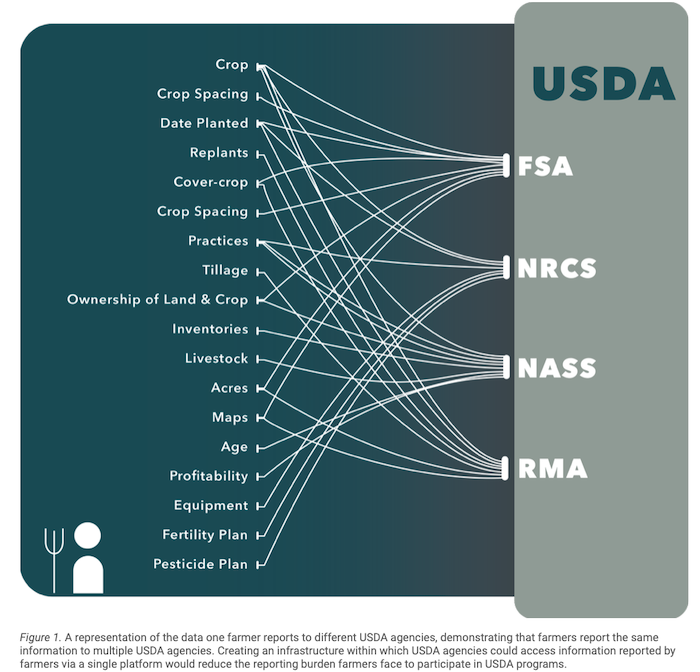I recently advised the AGree Initiative and the Data Foundation on a white paper titled Modernizing Agricultural Data Infrastructure to Improve Economic and Ecological Outcomes. The white paper explains the current problems with the USDA’s decentralized, disorganized system for collecting ag data and concludes with 4 possible solutions. As congress begins to shape the next farm bill, the time for discussing these issues is now.
Though many farms are already collecting and using ag data to improve their operations, the USDA has not similarly benefited from this new technology. USDA lacks the ability collect, share and analyze wide swaths of agricultural data. In many instances, this is intentional, as it protects producer privacy, but it is also the product of gradual evolution. To illustrate the point, the white paper contains a graphic that shows how many ways farmers report data to different agencies within USDA:

The result is that USDA cannot do the cross-agency data sharing the farmers can do with their peers. This means we do not always have direct evidence that certain farm programs are achieving their outcomes or hindering them. But USDA is not the only loser in the current situation. Farmers, agribusinesses and policymakers could all benefit from increasing the collective knowledge that USDA has about farms. Better data will improve farm research to increase productivity, reduce environmental footprints, and help create USDA programs that are a better value to the taxpayers.
The white paper explores 4 solutions to improve data acquisition, management and use:
- CENTRALIZED DATA INFRASTRUCTURE OPERATED BY USDA
- CENTRALIZED DATA INFRASTRUCTURE OPERATED BY A NON-GOVERNMENTAL INTERMEDIARY
- DATA LINKAGE HUB OPERATED BY A NON-USDA AGENCY IN THE FEDERAL GOVERNMENT
- A CONTRACTUAL MODEL
These solutions are described in more detail in the white paper. You can download a copy of the paper on this website: Modernizing Data Infrastructure to Improve Economic and Ecological Outcomes.






